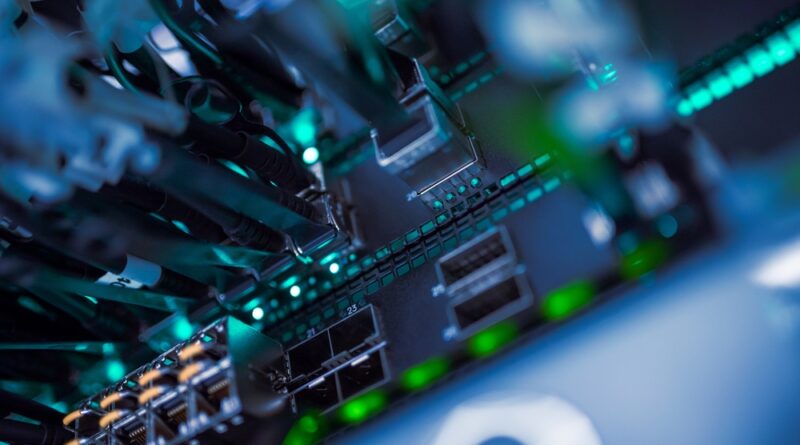The Core of IT Hardware: Servers
In the expansive realm of IT hardware, servers occupy a critical role, serving as the backbone for data management, application hosting, and network infrastructure. As the demands of digital transformation grow, understanding the importance and functionality of servers becomes essential for businesses and IT professionals alike. This article delves into the world of servers, highlighting their significance in computer hardware, and their integration with PCs and servers to create a robust IT ecosystem.
Table of Contents
ToggleThe Fundamental Role of Servers in IT Hardware
Servers are specialized computers designed to manage, store, and process data for other devices on a network. Unlike typical PCs, servers are built to handle multiple requests simultaneously, ensuring continuous and reliable performance. They are essential for a wide range of services including data storage, web hosting, email management, and application deployment, making them a cornerstone of modern IT hardware.
Servers come in various configurations, including tower, rack-mounted, and blade servers, each suited to different environments and workloads. Tower servers, similar in appearance to desktop PCs, are ideal for small businesses due to their simplicity and cost-effectiveness. Rack-mounted servers are designed for data centers, offering scalability and space efficiency. Blade servers, the most compact, maximize performance per unit of space, making them perfect for high-density environments.
Types of Servers and Their Functions
- File Servers: These servers store and manage files, allowing multiple users to access and share documents, images, and other data seamlessly. They are crucial for maintaining an organized and accessible data environment within businesses.
- Database Servers: Specialized for storing and managing databases, these servers enable multiple users to retrieve and manipulate data concurrently. They are essential for applications that handle large volumes of data, such as customer relationship management (CRM) systems and enterprise resource planning (ERP) systems.
- Web Servers: These servers host websites and deliver web pages to users. They handle HTTP requests and ensure that web content is served quickly and reliably to visitors.
- Mail Servers: Responsible for managing and storing email communications, mail servers ensure the reliable delivery, storage, and retrieval of emails within an organization.
- Application Servers: These servers host applications and make them accessible over a network. They handle the processing required for running applications, ensuring smooth and efficient operation.
Integration with PCs and Servers
Servers are integral to the broader ecosystem of PCs and servers, providing the necessary backend support for various client devices. PCs, typically used by end-users, rely on servers for accessing and storing data, running applications, and maintaining secure and efficient communication within a network.
In a typical business setup, employees might use PCs to access shared files on a file server. The server handles data management tasks, such as backup and security, while the PC provides a user-friendly interface for day-to-day operations. Similarly, a web server might host the company’s intranet, allowing employees to access important resources and information. This synergy between PCs and servers ensures optimal performance and productivity.
Importance of High-Quality Computer Hardware in Servers
The performance and reliability of a server heavily depend on its underlying computer hardware. High-quality components are vital for handling demanding workloads and ensuring continuous operation. Key hardware components in a server include:
- Processors (CPUs): Servers often use multi-core processors capable of handling numerous simultaneous tasks. High-performance CPUs are critical for applications requiring extensive data processing and real-time computing.
- Memory (RAM): Adequate memory is essential for efficient data management. More RAM allows servers to handle more simultaneous connections and larger datasets, improving overall performance.
- Storage Solutions: Servers require robust storage systems to manage vast amounts of data. This includes traditional hard drives (HDDs) for bulk storage and solid-state drives (SSDs) for faster data access. RAID configurations are often employed to enhance data redundancy and performance.
- Network Interfaces: High-speed network interfaces are crucial for servers to communicate effectively with other devices. Advanced network cards ensure fast and reliable data transfer.
- Power Supplies: Redundant power supplies are necessary to keep servers operational even if one power source fails, ensuring uptime and preventing data loss.
Future Trends in Server Technology
The future of server technology is shaped by several emerging trends:
- Virtualization: Virtualization technology allows multiple virtual servers to run on a single physical server, optimizing resource utilization and reducing costs. This approach is increasingly popular as businesses seek to maximize their IT investments.
- Cloud Computing: Cloud-based servers offer scalable, on-demand resources accessible over the internet. This model provides flexibility and cost savings, as businesses can scale their infrastructure based on demand.
- Edge Computing: Edge computing processes data closer to its source, reducing latency and improving performance. Servers located at the edge of the network handle tasks requiring real-time processing, such as IoT applications and autonomous systems.
- AI and Machine Learning: Servers are being optimized to support AI and machine learning workloads, providing the computational power necessary for advanced analytics and automation.
Conclusion
Servers are the heart of IT hardware, enabling the management, storage, and processing of data across networks. Their role in facilitating efficient and secure communication, application hosting, and data management underscores their importance in the modern digital landscape. By understanding the different types of servers, their integration with PCs, and the critical role of high-quality computer hardware, businesses can build resilient IT infrastructures that support their growth and innovation. As technology continues to advance, staying informed about the latest trends in server technology will ensure businesses remain competitive and capable of meeting the demands of the digital age.

